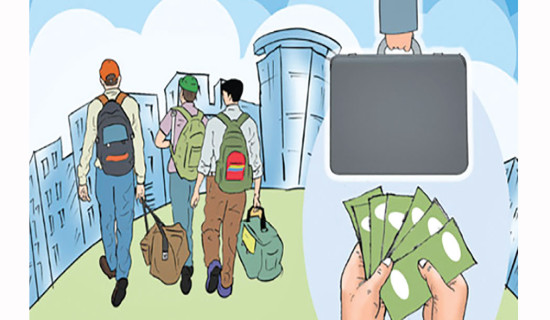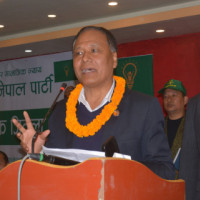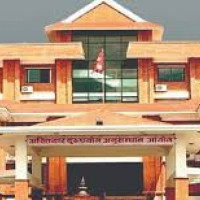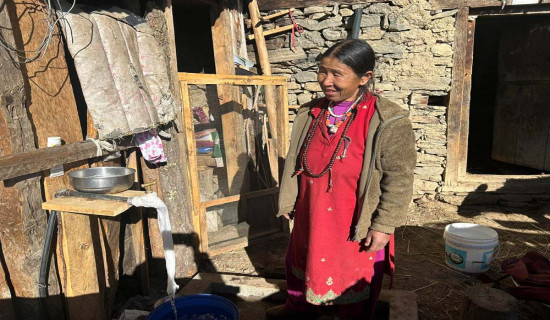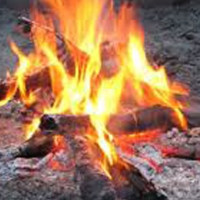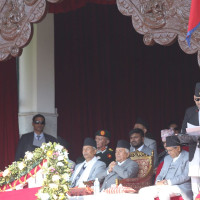- Tuesday, 16 December 2025
Female Participation In Higher Education
How Good Is Good Enough?
Female literacy and school education have obtained relatively more attention, but female participation in higher education has not been able to obtain the adequate attention that it deserves.
Recent data on education shows an encouraging trend in female participation in higher education. Their enrolment has increased significantly over the last decade, and they outnumber males in the overall higher education enrolment. This general scenario may be considered a great leap forward in a largely male-dominated society. But if the details of their participation by the type of campuses they are enrolled in and the faculties and the streams they are in are taken into consideration, the picture is not as cheerful as it appears at face value.
Brief background
Historical documents and oral tradition suggest that until lately, Nepal’s education was largely male-centric and limited to specific centers and towns. Attempts were made to establish education centers at various locations during the Rana regime.
Report of the High-level National Education Commission 2075 BS states that during the Rana regime, there were 321 primary schools, 203 middle schools, 11 secondary schools, two higher education institutions, one college, about 40 religious and other education institutions, and 31 libraries in the country. The literacy rate was two per cent and that of female literacy 0.7 per cent.

Records suggest that Suvarna Kumari Devi was the first lady to register for the SLC exam of 1934 AD but unfortunately, she did not take her exam. Twelve years later Lekh Rajya Laxmi passed the SLC exam in the first division in 1945 and Gorkhapatra had an editorial on it on April 30, 1946 (Baisakh 18, 2003 BS). In 1948 AD (2004 BS), four young ladies, including Angur Baba Joshi, passed the SLC exam. It was in 1948 that the government established and called for applications to enroll in a (girls-only school for free) (Padma Kanya School) in Kathmandu.
The first women’s college i.e., Padma Kanya College was established in 1951, and was inaugurated by King Tribhuvan. The establishment of PK campus exclusively for female students marked a major milestone in female participation in higher education. Then onwards, female participation in higher education began to take momentum. In 1959, Tribhuvan University was established. Similarly, Ratna Rajya Laxmi Girls’ College was established to promote female participation in higher education in 1961. It became a co-ed campus in 1974, and it remains so to date.
Current scenario
Up until the dawn of the 21st century, female participation in higher education remained low. The first comprehensive Education Management Information System (EMIS) Report on higher education 2007/08 showed 38.8 per cent female share in higher education. There has been a steady increase in female participation especially with an increase in the number of community campuses in the non-urban areas.
Table 1 presents the trends in total enrolment in higher education and the share of female students from 2010/11 to 2020/21. Over the last eleven years, the total enrolment in higher education has increased from 407,934 to 460,826. This is an overall increase of 13 per cent, which is encouraging.
More importantly, during the same years, female enrolment has increased from 170,516 to 242,103. This demonstrates an increase of 42 per cent. This is a significant step forward in the participation of females in higher education in Nepal in recent years.
Not only the numbers but also the female share in total enrolment has significantly increased over a decade. Ten years ago, female enrolment was only two out of every five students in the colleges, but this proportion has reached almost 53 per cent by 2020/21. It was since 2014/15 that female enrolment has outnumbered male enrolment.

We can draw a parallel between the increase in the enrolment of female students and the increase in overall foreign labor migration. According to data from Foreign Employment Promotion Board, it was in 2013/14 that the number of foreign labor migrants crossed 500,000 and continued to increase reaching the highest with 642,859 people in 2016/17. Obviously, the overwhelming majority of labor migrants are male, and the largest proportion are aged below 30 years. Correspondingly, the enrollment of males has not increased much after 2014/15.
Enrolment by types
of campuses
There are 11 federally supported universities running various undergraduate and graduate courses across Nepal. Likewise, there are 1,440 campuses affiliated with one or the other university in 2020/21. Among them, the largest number of campuses are private campuses (753). The community campuses are equal to 537 whereas there are only 150 constituent campuses. Thus, private campuses occupy 52.3 per cent of the total number of campuses.
The share of students by campus type is quite different in 2020/21. Although their share in total campuses is only 10.4 per cent, the constituent campuses share 36.5 per cent of the total student load, which is the largest (Figure 1).
The private campuses with a 34.4 per cent share, rank second in the total number of students. The share of students in the community campuses is 29 per cent. Their share was almost one-third a few years ago but 25 TU-affiliated community campuses were integrated as constituent campuses in Mid-west and Far-western universities in the last five years. As a result, the share of students in the constituent campuses increased and the share of the community campuses decreased.
Of the total students in the community campuses, 63 per cent of them are female. Consequently, community campuses are sometimes called chhori-buhari campuses (campus of daughters and daughters-in-law). By the name itself, most of these campuses are located in close proximity to the community so that, chhori-buhari can manage to have access.
But the sad thing is, with few exceptions, most of the community campuses are poorly equipped with academic infrastructure, human resources, and obviously financial resources. This limitation reflects in the overall quality of graduates and the learning achievement of which females are the victim. The constituent campuses have a larger share of male students than females.
Enrolment by stream of
education
Conventionally, there is an overall tendency to categorise disciplines as technical and non-technical streams. Disciplines such as Agriculture and Animal Sciences, Engineering, Fisheries, Forestry, Health Sciences, and Science and Technology are categorised as technical stream disciplines. Likewise, non-technical (general) stream disciplines include Buddhism, Education, Humanities and Social Sciences, Law, Management, and Sanskrit. Table 2 shows female participation in technical and non-technical streams. Whereas their share is 52.5 per cent in the overall enrolment, their share in technical education is 36.5 per cent only. The corresponding figure for male students is 63.5 per cent which is higher by 27 percentage points.

Higher education enrolment is overwhelmingly dominated by students enrolled in non-technical streams. Of the total enrolment, the non-technical stream shares 79 per cent and only 21 per cent i.e., one out of five, is enrolled in the technical stream. This is despite almost every government document on education emphasising technical education since the National Education System Plan 1971.
The scenario is further worrisome as in the technical stream only 14.4 per cent females have enrolled. In addition, among total males almost 28 per cent is in the technical stream, which is also not satisfactory. The lowest proportional share of females is found in Engineering (17.7 per cent), Animal Science and Fisheries (27.9 per cent), and Law (37.4 per cent). On the contrary, females constitute 62.6 per cent in Education, 60.9 per cent in Health Sciences, and 57.4 per cent in Management. In Health Sciences, the largest proportion is in Nursing.
The latest documents of the government have spelled out the emphasis on technical education and so are the election manifestos of major political parties with targets of increasing enrolment in technical education to 30 per cent by 2025.
Conclusion
Significant achievements have been observed in female participation in higher education. Female Gross Enrolment Ratio (GER) has reached 17 per cent against the national average of 17.8 per cent, their share in higher education has reached almost 53 per cent, and gender parity in GER has reached 0.9. In comparison to the data of the past 30 years, these are remarkable achievements in the context of Nepal as a nation.
But a careful analysis of female participation with respect to the types of campuses, the disciplines and the streams of education, and their achievements shows that sincere efforts are required to bring their education and participation level at par with their male counterparts.
(The author is former University Grants Commission chairman.)



